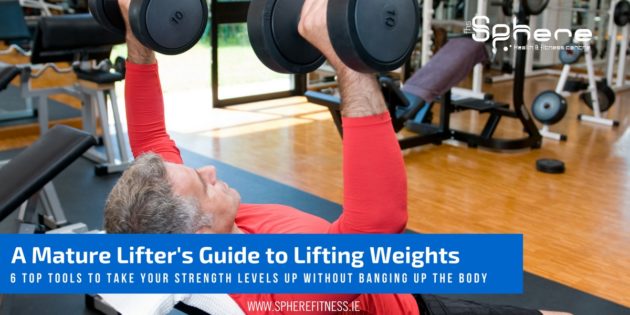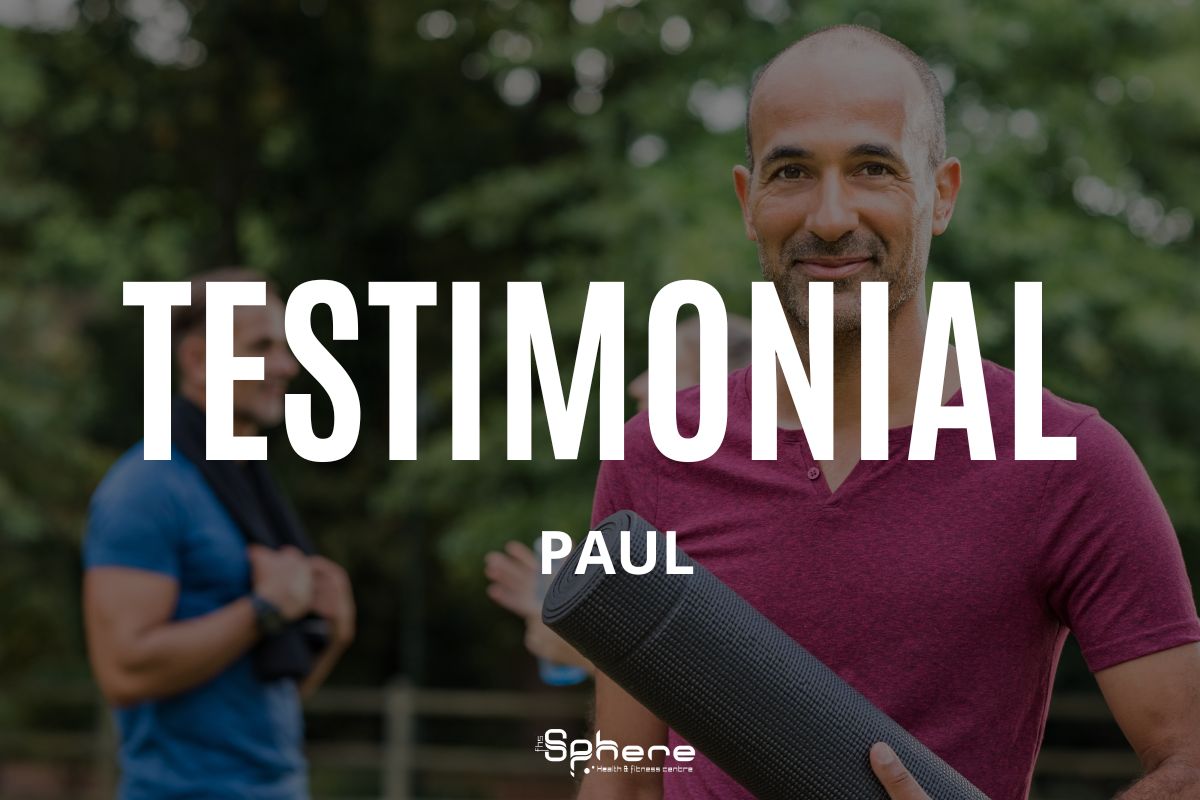There comes a stage when you accept you are not 25 and as a mature lifter anymore. But that doesn’t mean to say you are resigned to a routine of support frames and working around injuries to get a result from your training.
Things don’t have to ‘head south’ or ‘become soft’.
The key with gym routines is to stick at them and what may work for you in your 20s and 30s certainly has to change as you head into your 40s and beyond.
With the best will in the world, the BEST fitness program in the world is one you can stick to for a log time. Not two weeks in, 4 weeks out with an injury.
In fact I would say that most gym routines thrown out in a commercial setting have little to no regard of individual differences
This is a journey not a sprint.
Health and fitness brings with it the joys of better movement, more energy, more resilience to stress, sleep and everything you know that is good for you.
The only thing it doesn’t do is bring you super powers. It pains me to see those who have had an active lifestyle playing some sport stop in their 40s.
Cue the sedentary lifestyle. And never resume.
Sometimes an increase in pure weight on the bar for a mature lifter is not what it is cut out to be. I mean do you really need a 200kg squat, 140kg bench or 250kg deadlift to play with your kids?
At Sphere Fitness we realise that this age group is being let down BIG TIME…how?
- No Assessment. Head on into any commercial gym setting and there is ZERO assessment. Here at Sphere we ensure niggles don’t become nasties. That football career that has led to imbalances left to right has to be addressed. Your bone health, hormonal health, 10 year love of running that has led to knock knees and dodgy hips HAS to be taken into account. At Sphere we run a full Bodyscan to ensure that IF the need arises we can write you a specific plan not some cookie cutter approach.
- Not enough stretching. Stretching isn’t trendy. Unfortunately over time the only time anyone would dream of stretching is if it had a label attached to it i.e. yoga or pilates. Yet you see even these tools don’t take into account YOU. Hypermobile joints for example need stability not more stretching! It is a hard sell too. Most of us come into the gym sold on the Instagram or Facebook advice that #beastmode and ‘more is better’. It isn’t!! Better is better!!! Most, if not everyone would lose weight (if that is your goal) by beig more active and doing less in the gym, working hard on the diet and loving yourself a bit more!
- Lack of nutritional coaching. You can’t skip around this and boy does it need some help on an on-going basis! Over the years nutritional needs and diets change. Menopause, health challenges, body composition changes and injuries are some of the common ones that lead to help in this area and they need to be addressed individually!
- Lack of tracking. Body fat is a common tracking tool but of if told you that most folks are motivated in the 40s and beyond to have a healthy set of blood markers (Blood pressure, resting heart rate and blood lipids) they would have more of a spring in their step! Exercise is a core component to this. Ask ANY Doctor.
Here are some tried and tested methods that we have used over the years to stimulate not annihilate the body. In fact one of our classes is pure stretching:-
Using lifting speeds, biomechanics, time under tension and other fancy sounding techniques that results in you doing a serious training session without beating up the body too much.
Transformations can come easily when you know what you are doing. The art comes in the programme design for mature lifters. Far too many coaches have ‘programme bias’ pinning their flags to a powerlifting, functional training, body composition mast. A personalised programme is worth its weight in gold and has to include all components of physical intelligence.
These include Cardiovascular- respiratory health, stretching, stabilisation of joints and muscle groups, strength in the right areas, core strength and recovery.
Here are 6 of time tested methods that we use and some specific techniques
1. Slower Lowering
A controlled and focused lowering phase on the portion of the lift is useful. It builds tendon strength, allows you to really focus on technique and stimulate the right muscles you are trying to stimulate. I learnt the ‘tempo’ methodology off Australian Strength Coach Ian King who taught, with one of his coaches back in 1995, me to use the 3 digit system. The first number your lowered the weight in, the second number you paused before lifting it again and the third number was the speed of the lift.
So if you had a back squat try doing it in a 4-0-4 tempo (4 second up and 4 second down) compared to a 1-0-1 tempo (1seconds down, 0 pause and 1 second up). The difference is night and day, the weight you will be using to begin with will be too and the challenge all that more, well, challenging without banging up the joints!
What’s even better there is a physiological outcome – more burn, more fat loss and overall BETTER results.
2. 1 and 1/4 Movements
From the same vein 1 and a 1/4 movements are really effective in creating a set that lasts longer and at the same time work on the portions of the lift that are difficult. Try a 1 and 1/4 Goblet squat and compare that the 1-0-1 squat that I see in the gym. In the same vein, if you have the flexibility use it and do a full range movement! Again I don’t know who I stole this off but Ian King gets a mention here alongside Dr. Eric Serrano.
You can place pauses at certain portions of the lift too extending the time under tension.
3. As a mature lifter, do what you are bad at
If you suck up chin ups it is because you are weak and (probably carrying too much dead weight). So start with a regression, and work at them. If you suck at squats get someone to write you a program to give you the progressions towards being good at them. If your shoulders hurt when you do a press you may be doing them wrong or be weak in a stabilizing area for the movement.
If there is pain then fix it!! If you can’t put your arms over your head there may be several reasons but work at it and don’t leave it linger!
The overall message – leave your ego at the door and deliberately find what you are bad/weak at and go after it. You are only as strong as your weakest link!
There is also the argument to actually stop doing the exercise that is causing you grief. I have worked with a jacked and strong individual for over 10 years now. How many back squats has he done? NONE. Why? Because as a coach I don’t want to risk the T12 stenosis he has sitting there that wont go away. So we find a way around things. He is still squatting but we have adapted the exercise to him not the other way around.
If your back is achy after doing too much gardening or lifting it maybe weak. It needs more work, more core stability and more direct back strengthening work in a sensible progressive manner.
4. Pauses
Pauses in the lowering portion of the lifts are effective. For example an arm curl with 3 pauses in the lowering portion of the lift for 6 seconds at each point will create a different challenge and result in a lighter load being used.
5. Bodyweight movements for Mature Lifter
What is wrong with becoming a ninja in the press up, dip and chin up. These have been the bread and butter of athletes for centuries! Nothing changes my friend!
Strong mind, strong body. Learning a new skill like a press up, squat, lunge or chin up does wonder for your brain health establishing more neural connections!
6. Drop Sets
These are great for a mature lifter. This is where you take a weight for 10 reps and go to failure. Then immediately drop the weight 5-10% and carry on before another drop in weight for 5-10% and finishing up. It means a beat up muscle but you are working on volume not excessive weight. Great for smaller muscle groups like your arms.
7. Stretch More.
Nobody stretches enough. Why? It isn’t sexy and counter balances everything that has been sold about the gym in recent years namely to smash yourself into oblivion and chase the burn. This couldn’t be further from the truth. Yes there is a time and place for this but you had better be firing on all cylinders with your health if and when you get to this level and more often than not this can take 2-3 years before it happens. In that time you are better off fixing any weak links you have, stretching, working on improving your cardiovascular- respiratory fitness, learning to love yourself, getting some sleep and sorting out your shitty food choices BEFORE I see you smash yourself up in a High Intensity Interval class.
CLICK HERE TO CONTACT US AND FIND OUT MORE
Recent Posts
-
Personal Training is An Investment Not a Cost
When it comes to fitness, it's easy to see personal training as a cost, an added expense that can se
-
Testimonial - Darren
Darren, like alot of busy working professionals, struggled with back pain and regarded his fitness l
-
Testimonial - Sarah
Sarah, joined us for our Live Well 50+ Programme and despite feeling unfit, fear of being judged and
-
Testimonial - Phill
Meet Philly Philly came to us to help him overcome a life-changing event that left him paralysed







